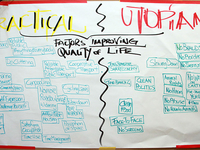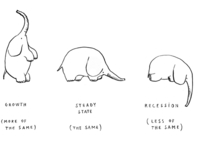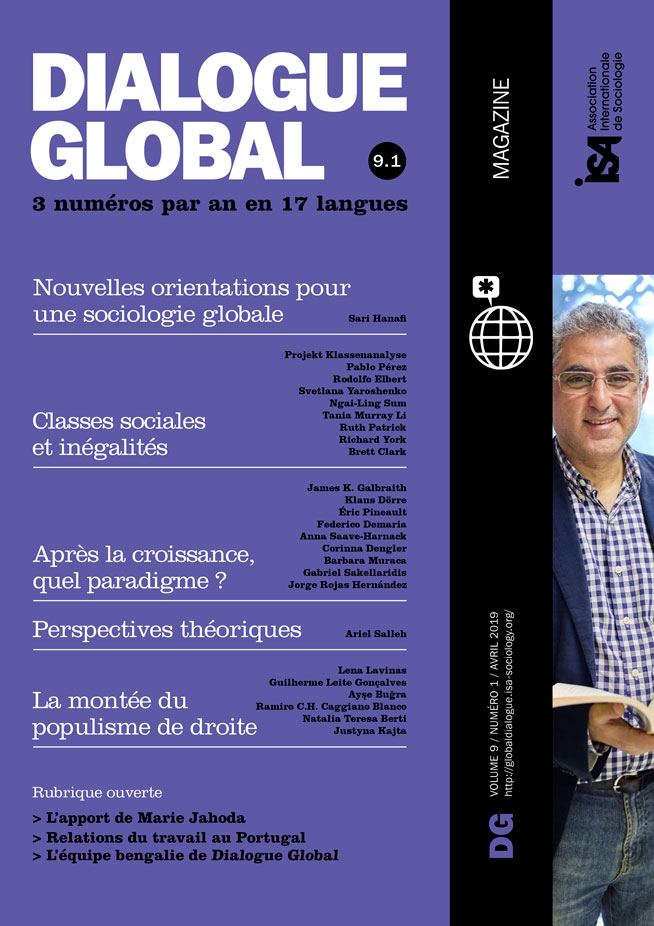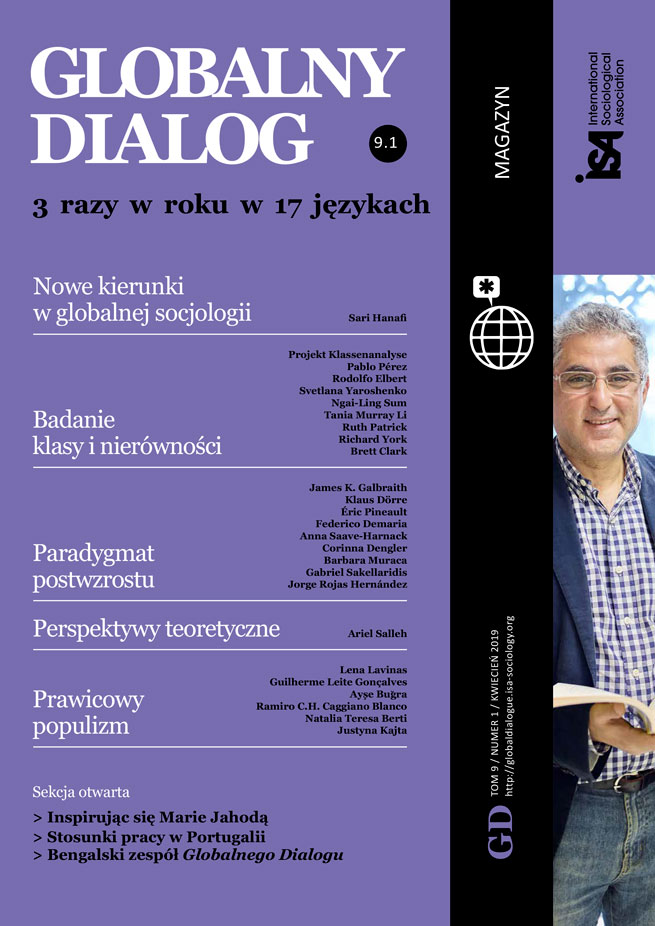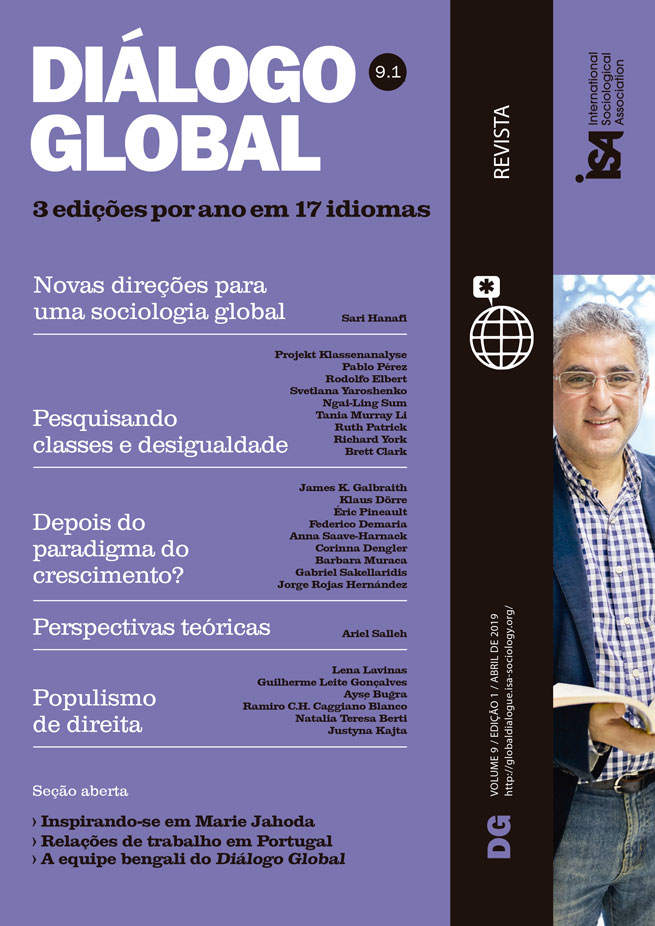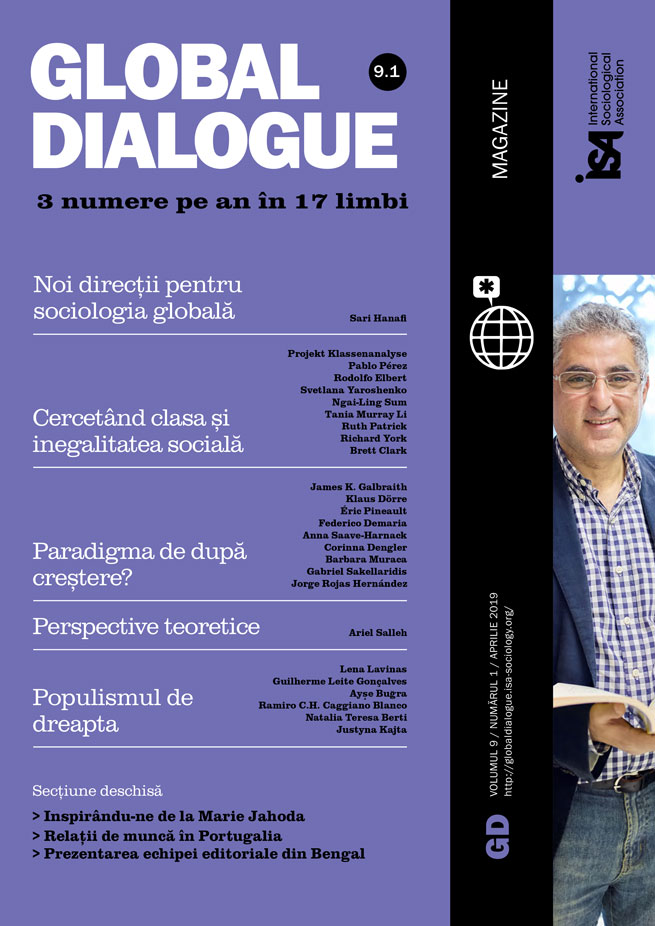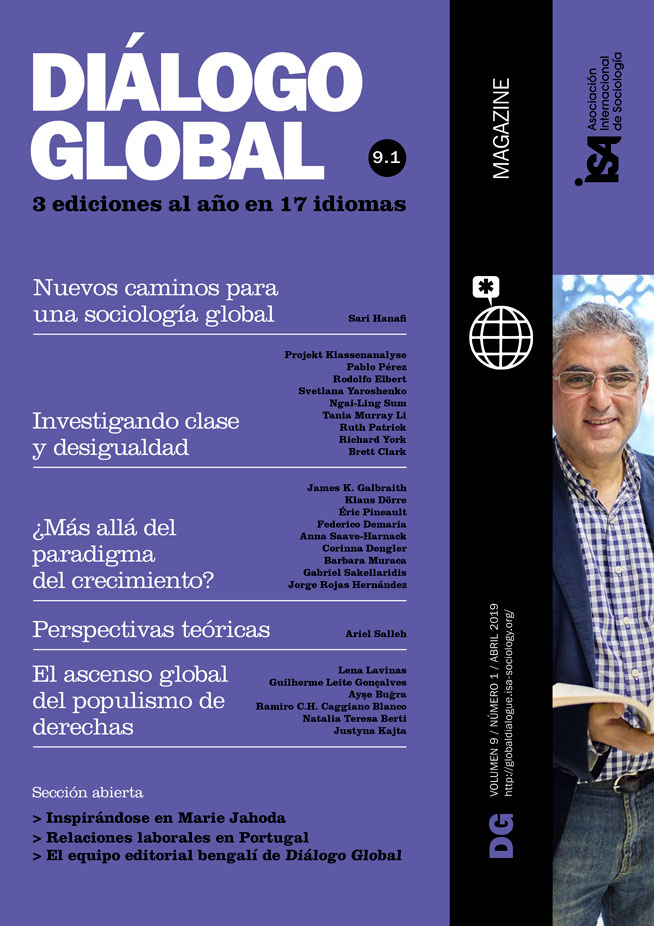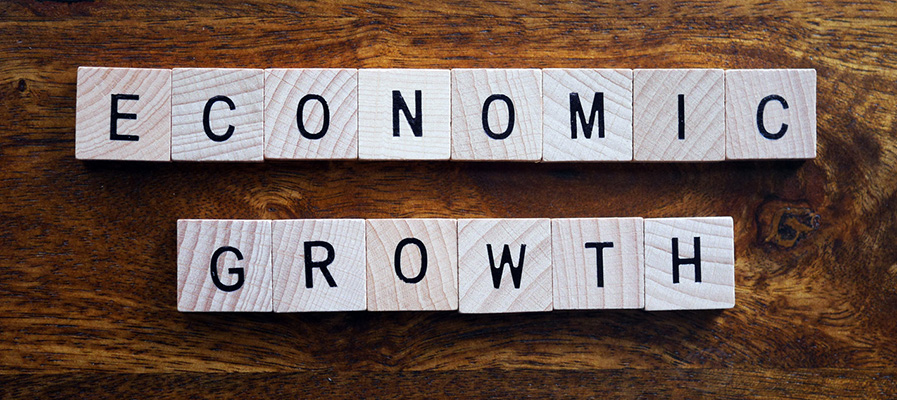Growth in a capitalist society has multiple meanings and implications, as does the specter of its breakdown or end. It is a material fact, a monetary representation of economic scale and also an idea, a central and very difficult one to challenge in a capitalist society. The post-growth condition refers here to a context where this challenge becomes not only possible but necessary.
Growth refers in the first instance to what the GDP and other metrics of national accounts measure: the size and dynamics of capitalism as a monetary production economy. These include the amount of commodities produced (output) and consumed (demand); the accumulation of stocks; and investment in fixed capital, be it tangible (machines) or intangible (R&D, patents). This translates into employment, generating monetary income in the form of wages, profits, taxes, interest, and dividends.
Growth from this narrow economic perspective means both more output and more capacity to produce output. The growth rate, expressed as a percentage, represents the intensity of this expansionary process. In modern capitalist societies growth appears as the “normal” state of the economy, one number – GDP – expresses and subsumes the myriad social and material relations that make up this fact. A low growth rate will see the emergence of conflicts of distribution between capital, labor, and the state. A prolonged decline of growth rates (“secular stagnation”) will generate a prolonged state of instability and conflict. Declining growth rates in capitalist economies are a self-sustaining phenomenon: states cut back expenditure; corporations cancel investments and cut back production; capitalists hoard profits or shift them to the financial sphere; workers lose their collective class power as they divide themselves in defensive struggles; and demand weakens in economies used to a wage-led growth dynamic. This has been the experience of many core capitalist countries since the 2008 crisis.
Growth is then a central means of regulating the inner class contradictions of capitalist societies. Founded on accumulation through exploitation, capitalism finds stability in growth: wages rise in tandem with profits; full employment accompanies high investment; class conflict is attenuated and becomes manageable; the growing surplus is absorbed in the form of a rising “standard of living” for most, but also by a widening welfare state. If growth falls below a certain rate all this starts to unravel. This is not immediately a concern for capitalists, who can compensate for faltering growth by squeezing higher profits from production. Of course this further dampens demand and growth because it is labor income that will ultimately be squeezed, but workers can always resort to the credit card, or the output can be sold to “un-squeezed” consumers elsewhere. In this conjuncture it is the organized parts of the working class that are “growth demanders”: they propose and struggle for policies that induce a higher growth rate: higher social spending by the state, wage growth, and finally higher “real” and job-creating investment by firms. If secular stagnation, understood as a deeply embedded and class-reinforced structural tendency towards a zero growth rate, truly represents the future of advanced capitalist societies, then we will remain in this paradoxical conjuncture of growth-hungry workers and social movements - what we can call a progressive growth coalition - facing growth-indifferent corporations and blasé capitalists. One can readily imagine the challenge this represents for critical sociology and theories of capitalism.
GDP measures an economy’s size in relation to itself. Because it is expressed in monetary units, it is as if capitalism is a self-contained system that “grows on itself.” But since Polanyi, we know that capitalist relations develop and grow inside wider social relations and institutions that they subvert to their logic, sometimes destroying the very foundations of growth in this process. Feminist theory has furthermore shown the central dependence of labor, value, and capital on “unvalued” reproductive work such as care. Not only does the economy grow through something (social relations) but it grows on something (reproductive work and care). Applied to North-South relations, it can further be argued that growth of the advanced capitalist core also rests on the capacity to externalize to a Global South or periphery the pressures inherent to what can be called an imperial mode of living. When redefined as an expansion of commodified social relations, as externalization, and as more intense demands on unvalued reproductive work, demands for stronger, more robust, and inclusive growth by a progressive growth coalition can provoke a sobering unease.
This is further complicated when growth is considered as a material process, when the disruptive effects of extraction, production, consumption, and waste on ecosystems, living beings, and global biogeochemical cycles are understood and acknowledged, such as in the case of climate change. Biophysical scale - the aggregate size of the economy relative to the ecosystems and, more globally, the earth systems in which it is embedded - and the intensity of the biophysical impacts (depletion, pollution, artificialization) give us a new representation of an inherently bounded and limited economy. The emerging field of Social Ecology has developed metrics and categories that capture growth and scale of capitalist economies in biophysical terms. The sociological presumption is that our metabolism as individuals is subsumed by a wider social organization of metabolism at the societal level. Socio-economic metabolism can be measured as the throughput of matter and energy needed to produce the output of consumption and investment goods and services in a capitalist society. Once we have shaken off the shibboleths of a monetary production economy decoupled from any biophysical base, of dematerialized accumulation (as if we could live off a Twitter feed!), and understand the tight articulation of biophysical throughput and monetary production as well as the embodiment of capital in artifacts (buildings, machines, infrastructures) that only work if fed with energy and matter, then the question of biophysical limits to growth becomes a fact as hard and evident as GDP.
From this biophysical perspective, the post-growth condition points to the ecological contradictions of capitalist society and its economic growth. These contradictions exist on their own and can no longer be treated as secondary or derivatives of the true inner contradiction between labor and capital. The post-growth condition thus entails an enriched ecologized materialism alongside the more traditional historical materialism on which critical theory has developed since Marx.
As this mode of analysis of capitalism has developed over the last decades it has become evident that the metabolism of advanced capitalist societies must be scaled down. But it has also become evident that scaling down the biophysical growth of a capitalist economy is an impossibility, as John Bellamy Foster has argued - even when GDP growth rates are abysmally low, biophysical scale does not follow. The myriad of mechanisms that keep the accumulation treadmill of capital materialized in ecologically unsustainable metabolic and biophysical processes have been painstakingly documented by ecologized social theory.
Facing and resolving these ecological contradictions means scaling down the economic process of capitalist societies. But the institutionalized social relations of production and consumption in capitalist societies are based on a constant scaling up of the economy and intensification of its effects. The more it is riven by contradictions and faces barriers to its development, the more growth will be considered a solution by its constituent social classes. Modern capitalist societies need and want growth for economic, political and cultural reasons, and yet their metabolism must be scaled down for biophysical reasons. They lack a political vocabulary and an imaginary to express this contradiction on its own terms. This is the problem that the post-growth condition submits to critical sociology and to critical theory in general.
Éric Pineault, Université du Québec à Montréal, Canada, and Research Group on Post-Growth Societies, University of Jena, Germany <eric.pineault@uni-jena.de>
